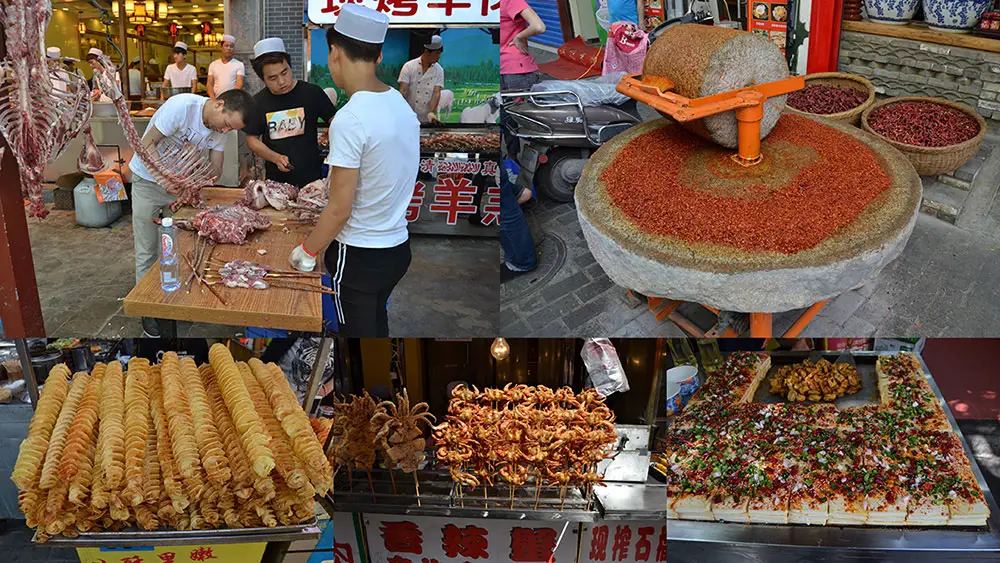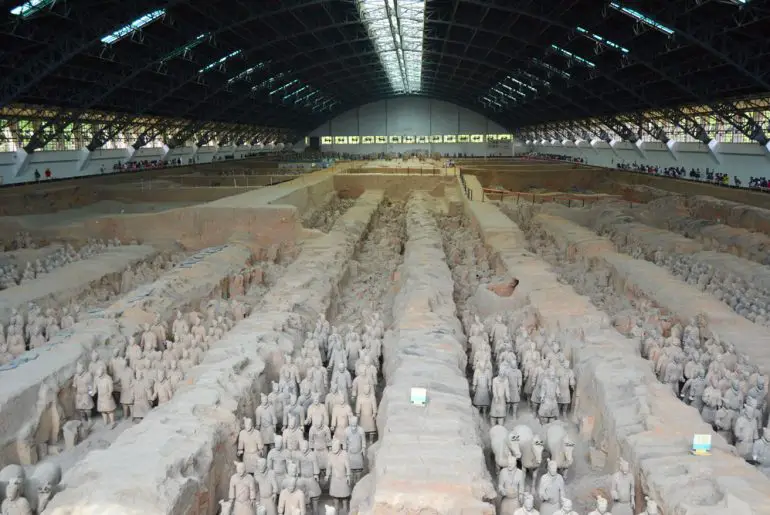Last Updated on 07.09.2023 by Iliyan
Planning to spend one day in Xian and not sure where to start? That’s fine. Follow this itinerary to see the best of Xian in one day! I’ve focused on the must-see attractions like the Terracotta Army, Bell Tower, Drum Tower, ets.
Contents
About Xian
Xian is one of the oldest cities in China, in fact it’s over 3,000 years old. It was the first of the Four Great Ancient Capitals, and is also the starting point of the Silk Route. People often say, ‘If you haven’t been to Xian, you haven’t been to China’. However, the city has numerous cultural and historical sites to visit.
One Day in Xian
If you have only one day, you’ll be able to see a lot of Xian’s highlights and landmarks. Below is a detailed itinerary to what to do in Xian.
As one of the most stunning ancient cities in China, Xian has its own unique cultural values and its historical sites. There are plenty of historical attractions like Terracotta Army, City Wall, Bell Tower, Drum Tower and Giant Wild Goose Pagoda. There are also natural sights around the city like Mount Hua and the Huaqing Hot Springs.
Terracotta Army
The Terracotta Army is one of China’s most famous sights, if not the world. It is the main attraction in Xian. The site is located just about 30 km from the city centre, you can take a bus or take a tour for the day.




It is by far the most significant archeological find of the 20th century. The original site was discovered by farmers in 1974 as they were digging a well near the royal tomb. The Terracotta Army was constructed to accompany the tomb of Emperor Qin Shi Huang, the first emperor of China. It’s believed they were built and buried 2,000 years ago to protect him as an afterlife guard. The Terracotta Army consists over 8,000 life size terracotta figures of warriors buried along with the emperor, and horses standing in trenches to protect the emperor. Terracotta Warriors in Xian is known as the eighth wonder of the world. After the warriors were discovered, the site became a museum and in 1987, it was listed as a UNESCO World Cultural Heritage Site.


Bell Tower
The Xian Bell Tower is a beautiful grand, traditional building – it marks the center of the ancient capital, at the intersection of the four streets of the east, west, south and north. The Bell Tower was built in 1384 by Emperor Hongwu of the Ming Dynasty, as a way to dominate the surrounding countryside.

Drum Tower
Near the Bell Tower is the Drum Tower, that can be approached via a short walk. The Bell Tower together with the Drum Tower are 2 important landmarks in Xian. Both of them are called the ‘sister buildings’ or ‘morning bell and dark drum’.
The Drum Tower was built in 1380 during the reign of Emperor Hongwu of the Ming Dynasty, and was renovated in the Qing Dynasty. It contains a selection of drums and a small museum. Get a combined ticket with the Bell Tower, and experience both.

Muslim Quarter
Right next to the Drum Tower is the Muslim Quarter. This is the center of the Muslim community in Xian. They have been living in Xian for thousands of years, after travelling to the ancient capital via the Silk Road. There are about 10 mosques in the area, but the largest and most famous is the Great Mosque. It was added to the UNESCO Islamic Heritage List in 1985.
The Muslim Quarter in Xian is very popular for its abundant delicious local snacks and rich culture of ancient immigration. The streets in the area are clean and colorful. The main street through the Muslim Quarter is fantastic, and all about the food – loads of shops selling street food. Plenty of street vendors. In addition to that, it’s very good place to visit for a bargain, if you want to buy souvenirs.



Giant Wild Goose Pagoda
The next landmark was the Giant Wild Goose Pagoda. We walked to the pagoda but did not go inside. It is a Buddhist pagoda and it is one of the symbolic structures in Xian. It was built in 652 during the Tang dynasty and renovated during Empress Wu Zetian reign and in Ming Dynasty. This site was added to the World Heritage List in 2014.

Xian City Wall
Our last stop was the Xian City Wall. It was built 600 years ago in the Ming Dynasty and is one of the best preserved walls in China. The wall symbolises the Fortifications of Xian, illustrating the defensive structure of ancient Chinese cities. The best part about the City Wall is that the top of the wall is fully accessible. There is a wide walkway that you can ascend to and walk completely around the old city. Since 2008, it is an UNESCO’s World Heritage Site.
Is Xian Worth Visiting?
Yes! It is absolutely worth visiting, whether you are spending a week or just one day in Xian. The city is part of the Golden Triangle of China Beijing-Xian-Shanghai, and it is popular itinerary for first-time visitors to China. It is no coincidence that Xian natives say: “If you want to see China over the past 100 years, go to Shanghai. If you want to see China over the past 1000 years, go to Beijing. But if you want to see China over the past 5000 years, go to Xian.”



